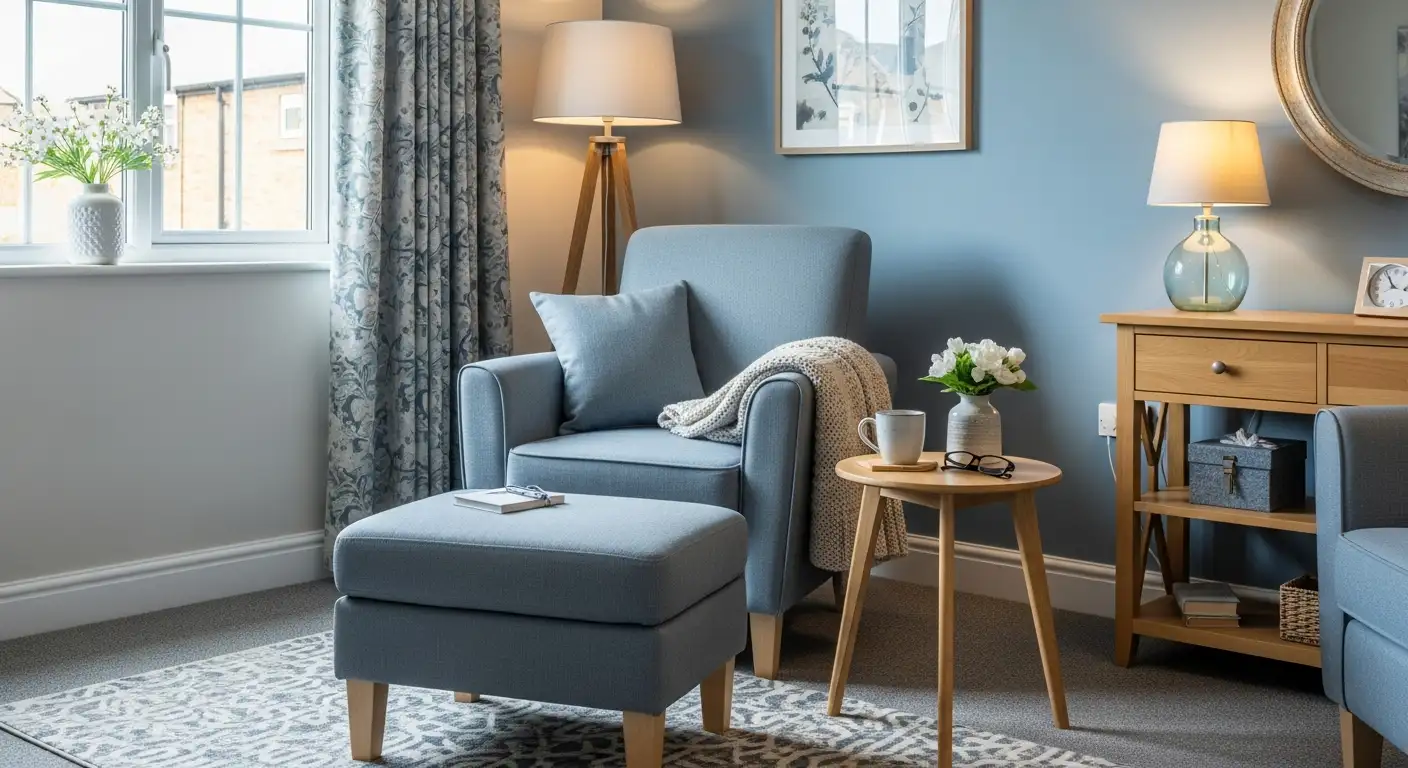The Importance of Finding the Right Narrow Width Walker
When it comes to mobility aids, finding the right narrow width walker is of utmost importance. A narrow width walker is specifically designed for individuals who require a narrower frame to maneuver comfortably through tight spaces. In this section, we will explore the need for a narrow width walker and the benefits of using one that is properly fitted.

Understanding the Need for a Narrow Width Walker
Not all individuals have the same space requirements when it comes to mobility aids. Some may live in smaller homes, navigate narrow hallways, or face tight spaces in public places. In such cases, a standard walker with a wider frame may not be practical or convenient. A narrow width walker addresses this issue by providing a more compact and streamlined design that allows for easier movement in confined areas.
By using a narrow width walker, individuals can navigate through doorways, hallways, and crowded spaces more effectively. This can significantly enhance their independence and confidence, enabling them to participate in various activities without feeling restricted by their mobility aid.
Benefits of Using a Properly Fitted Walker
Using a properly fitted narrow width walker offers numerous benefits. Here are some key advantages:
- Improved Maneuverability: A narrow width walker allows for greater maneuverability in tight spaces. It enables users to navigate through narrow doorways, crowded areas, and other confined environments with ease.
- Enhanced Stability: A properly fitted narrow width walker provides stability and support, reducing the risk of falls or accidents. The narrower frame ensures that the walker remains stable while walking or standing.
- Increased Comfort: When using a narrow width walker that fits correctly, individuals experience increased comfort during mobility. The walker's dimensions align with their body, allowing for a more natural and comfortable walking posture.
- Greater Independence: With a narrow width walker, individuals can maintain their independence and carry out daily activities with minimal assistance. The freedom to move around independently boosts confidence and contributes to a better quality of life.
When considering a narrow width walker, it's essential to assess your specific mobility needs and choose a walker that meets those requirements. Now that we understand the importance of finding the right narrow width walker, let's explore the factors to consider when making a selection.
Factors to Consider When Choosing a Narrow Width Walker
When selecting a narrow width walker, it's important to consider various factors to ensure that it meets your specific needs. This section will explore two important factors: assessing your walking needs and evaluating the width requirements.
Assessing Your Walking Needs
Before choosing a narrow width walker, it's crucial to assess your walking needs. This involves considering your mobility level, the terrain you will be navigating, and any specific challenges you may face. By understanding your walking requirements, you can select a walker that provides the necessary support and functionality.

By carefully evaluating your walking needs, you can select a narrow width walker that aligns with your specific requirements and provides the necessary support and functionality.
Evaluating the Width Requirements
Another crucial factor to consider when choosing a narrow width walker is evaluating the width requirements. This involves measuring the spaces in which you will be using the walker to ensure it can maneuver comfortably without causing any obstructions.

By evaluating the width requirements, you can choose a narrow width walker that perfectly fits your environment, allowing for safe and unhindered movement.
Considering your walking needs and evaluating the width requirements are essential steps in choosing the right narrow width walker. By taking these factors into account, you can select a walker that provides the necessary support, functionality, and maneuverability to enhance your mobility and ensure your safety.
Types of Narrow Width Walkers
When it comes to choosing a narrow width walker, there are several options available to suit different needs and preferences. In this section, we will explore three common types of narrow width walkers: folding walkers, rollators, and knee walkers.
Folding Walkers
Folding Walkers are a popular choice for individuals who require additional support and stability while walking. These walkers consist of a lightweight frame with four legs and two handles. They are designed to provide stability and balance, making them suitable for those who need extra assistance.
One of the key benefits of folding walkers is their compact and foldable design. This allows for easy storage and transportation, making them ideal for individuals who are always on the go. Folding walkers are typically height adjustable and provide a sturdy base for walking support.
Rollators
Rollators are a more advanced type of narrow width walker that offers both support and mobility. These walkers come with four wheels, a frame, handles, and a built-in seat. Rollators are equipped with hand brakes, allowing users to control their speed and come to a complete stop when needed.
The wheels on rollators make them easier to maneuver, providing a smoother walking experience. The built-in seat is a convenient feature that allows users to take a break whenever necessary. Rollators are suitable for individuals who require moderate support but still want the freedom to move around more easily.
Knee Walkers
Knee Walkers, also known as Knee Scooters, are a specialized type of narrow width walker used primarily for individuals with lower leg injuries or post-surgery recovery. These walkers feature a seat for the affected leg, handlebars for steering, and wheels for mobility. Users rest their injured leg on the padded seat while propelling themselves forward with their other leg.
Knee walkers provide a hands-free alternative to traditional walkers and crutches. They offer greater mobility and independence, allowing users to navigate through different terrains more comfortably. Knee walkers are typically adjustable to accommodate different heights and leg lengths.

When choosing a narrow width walker, it's important to consider factors such as stability, maneuverability, and the specific needs of the individual. Each type of walker has its own unique benefits, so it's essential to assess the requirements and consult with a healthcare professional to determine the most suitable option.
Features to Look for in a Narrow Width Walker
When selecting a narrow width walker, there are several key features to consider. These features play a crucial role in ensuring comfort, stability, and overall functionality. Let's explore three important features to look for in a narrow width walker: adjustable height, maneuverability, and stability and safety features.
Adjustable Height
An adjustable height feature is essential for a narrow width walker as it allows for customization to suit the user's height and walking posture. The ability to adjust the height ensures proper alignment and reduces strain on the wrists, back, and shoulders. It is important to choose a walker that offers a wide range of height settings to accommodate various individuals' needs.
To determine the appropriate height for the walker, the user should stand upright with their shoes on and their arms relaxed at their sides. The walker handles should be positioned at wrist level, providing a comfortable and natural grip. This proper alignment promotes better posture and reduces the risk of discomfort or injury during use.
Maneuverability
Maneuverability is a critical factor in a narrow width walker, especially when navigating tight spaces or crowded areas. A walker that can easily turn and move in different directions enhances the user's mobility and overall walking experience.
Look for features such as swivel wheels or front-wheel pivoting that allow for smooth and effortless maneuvering. Larger wheels are also beneficial as they provide better stability and make it easier to traverse uneven surfaces or outdoor terrains. Additionally, walkers with a narrow turning radius ensure easy navigation through narrow doorways or confined spaces.
Stability and Safety Features
Stability and Safety are paramount when choosing a narrow width walker. These features help prevent falls, provide support, and instill confidence in the user. Look for walkers with features such as:
- Brakes: Ensure that the walker has reliable braking systems, such as loop brakes or push-down brakes, that are easily accessible to the user. These brakes allow for quick and secure stopping, preventing accidental slips or falls.
- Weight Capacity: Consider the weight capacity of the walker to ensure it can safely support the user's weight. Different walkers have varying weight limits, so it's important to select one that suits the individual's needs.
- Grips and Handles: Look for ergonomic handles with comfortable, non-slip grips. These features provide better control, reduce strain on the hands, and minimize the risk of slipping during use.
- Sturdy Frame: A solid and durable frame construction is essential for stability. Ensure that the walker is made from high-quality materials that can withstand regular use and provide a reliable support system.
By considering these important features, individuals can choose a narrow width walker that meets their specific needs and enhances their mobility and independence. It is recommended to consult with a healthcare professional or therapist for guidance in selecting the most suitable walker for individual requirements.
Tips for Finding the Best Narrow Width Walker
When searching for the best narrow width walker, there are several tips to keep in mind to ensure you find the right one for your needs. These tips can help you make an informed decision and select a walker that provides comfort, stability, and meets your specific requirements.
Seeking Professional Assistance
Before purchasing a narrow width walker, it is advisable to seek professional assistance, such as consulting with a healthcare provider or a physical therapist. They can assess your mobility needs and provide guidance on the type of walker that would be most suitable for you. They can also offer valuable advice on features to consider and any specific considerations based on your individual circumstances.
Trying Before Buying
It's essential to try out different narrow width walkers before making a purchase. This allows you to evaluate the walker's fit, comfort, and maneuverability. Take the time to walk with the walker, ensuring that it provides the necessary support and stability. Pay attention to how easily you can maneuver it and whether it fits through narrow spaces, doorways, and hallways. Trying out different models will help you find the one that suits your walking style and feels most comfortable for extended periods of use.
Considering Long-Term Needs
When selecting a narrow width walker, it's important to consider your long-term needs. Think about factors such as durability, adjustability, and the potential for future adjustments or modifications. As your needs may change over time, it's beneficial to choose a walker that can adapt to accommodate any evolving requirements. This can help prolong the lifespan of the walker and ensure it remains suitable for your needs in the long run.
Finding the best narrow width walker involves considering various factors and seeking guidance from professionals. By taking the time to explore your options, trying out different walkers, and considering your long-term needs, you can select a walker that provides the necessary support and enhances your mobility with confidence.
Conclusion
Choosing the right narrow width walker is a crucial decision that can significantly impact an individual's mobility and independence. By evaluating their walking needs, measuring the width requirements, and considering important features such as adjustability, maneuverability, stability, and safety, individuals can select a walker that meets their specific requirements.
When selecting a narrow width walker, it's essential to seek professional assistance and try out different models before making a purchase. Considering long-term needs and potential modifications can also help ensure the walker remains suitable for use in the future.
With careful consideration of these factors, individuals can choose a narrow width walker that provides the necessary support, enhances their mobility and independence while promoting safety and comfort.
Sources
- https://orthoinfo.aaos.org/en/recovery/knee-walkers-knee-scooters/
- https://www.arthritis.org/health-wellness/treatment/devices/walking-aids/how-to-choose-the-right-walker-or-rollator
- https://www.nia.nih.gov/health/choosing-and-using-walkers-safely
- https://www.ptproductsonline.com/mobility/aids-for-daily-living/maneuverability-matters-selecting-right-walker-patients/
- https://www.verywellhealth.com/best-narrow-walkers-4176312



